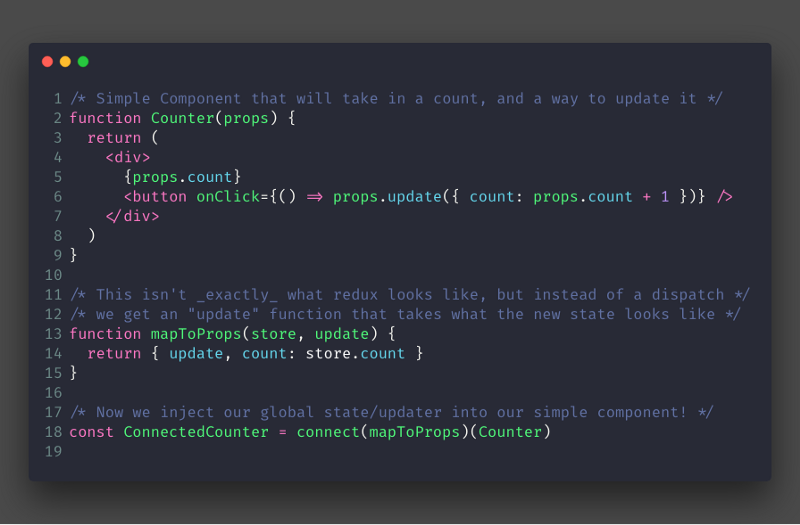

Preserve initial state for not-yet-loaded reducersĬonst reducerNames = Object. Reducer function will accept the previous state of app and action being dispatched, calculate the next state and returns the new object. It is the only place where you can write logic and calculations. Import reducerRegistry from './reducerRegistry' Ĭonst initialState = /* from local storage or server */ Reducers are the only way to change states in Redux. data/notifications/index.jsĬonst createActionName = name => ` app/notifications/ $ from 'redux'

Here’s an example of a small “redux module”. (More about the concept of redux modules.)
REDUX REDUCER CODE
Organizing redux code into self-contained modules makes it possible to create APIs that don’t involve directly referencing the internal state of a reducer – this makes refactoring and testing a lot easier.
REDUX REDUCER UPDATE
create src/app/reducers/index.ts update src/app/. Redux modules comprise of a reducer, actions, action creators, and selectors. NgRx Store provides reactive state management for Angular apps inspired by Redux. It’s relatively straight-forward and proven in production over several years. This post describes how I added support for incrementally loading the Redux modules in Twitter Lite. However, Redux’s default API is not designed for applications that are incrementally-loaded during a user session. Next, create a class, ExpenseEntryItemList and call constructor with props.Ĭlass ExpenseEntryItemList extends React.Twitter Lite uses Redux for state management and relies on code-splitting. It gets called whenever the state of the store is updated. Here, state refers current state of the store and Object refers the new props of the component. MapStateToProps − Accepts a function with below signature. Let us see the first two parameters which will be enough for most cases. Let hoc = connect(mapStateToProps, mapDispatchToProps) A higher order component is a function which wraps a component and returns a new component. Redux provides a single api, connect which will connect a components to the store and allows the component to get and set the state of the store.įunction connect(mapStateToProps?, mapDispatchToProps?, mergeProps?, options?)Īll parameters are optional and it returns a HOC (higher order component).

Redux promotes the use of functional programming for managing state. It simplifies the original Flux architecture by combining all stores and the dispatcher in a single store object. Redux provides a simple process to get and set the current state of the application and involves below concepts. Redux is a very popular state management library. React component can get the latest state from the store as well as change the state at any time. React redux maintains the state of the application in a single place called Redux store.
REDUX REDUCER HOW TO
Let us learn about the how to write a React application using React redux in this chapter. Also, it allows any component to change the state of the application at any time. React redux allows any component to access the state at any time. React redux chips in and helps to maintain state at the application level. It helps to some extent but it becomes complex when the components increases. React recommends to move the state to the top level component and pass the state to the nested component using properties. In a big and complex application, large number of components are used. As we learned earlier, React only supports component level state management. React redux is an advanced state management library for React.


 0 kommentar(er)
0 kommentar(er)
